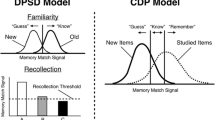Abstract
Functional connectivity analyses for task-based fMRI data are generally preceded by methods for identification of network nodes. As there is no general canonical approach to identifying network nodes, different identification techniques may exert different effects on inferences drawn regarding functional network properties. Here, we compared the impact of two different node identification techniques on estimates of local node importance (based on Degree Centrality, DC) in two working memory domains: verbal and visual. The two techniques compared were the commonly used Activation Likelihood Estimate (ALE) technique (with node locations based on data aggregation), against a hybrid technique, Experimentally Derived Estimation (EDE). In the latter, ALE was first used to isolate regions of interest; then participant-specific nodes were identified based on individual-participant local maxima. Time series were extracted at each node for each dataset and subsequently used in functional connectivity analysis to: (1) assess the impact of choice of technique on estimates of DC, and (2) assess the difference between the techniques in the ranking of nodes (based on DC) in the networks they produced. In both domains, we found a significant Technique by Node interaction, signifying that the two techniques yielded networks with different DC estimates. Moreover, for the majority of participants, node rankings were uncorrelated between the two techniques (85% for the verbal working memory task and 92% for the visual working memory task). The latter effect is direct evidence that the identification techniques produced different rankings at the level of individual participants. These results indicate that node choice in task-based fMRI data exerts downstream effects that will impact interpretation and reverse inference regarding brain function.







Similar content being viewed by others
References
Bakshi N, Pruitt P, Radwan J, Keshavan MS, Rajan U, Zajac-Benitez C, Diwadkar VA (2011) Inefficiently increased anterior cingulate modulation of cortical systems during working memory in young offspring of schizophrenia patients. J Psychiatr Res 45(8):1067–1076. https://doi.org/10.1016/j.jpsychires.2011.01.002
Baldo JV, Dronkers NF (2006) The role of inferior parietal and inferior frontal cortex in working memory. Neuropsychology 20(5):529–538. https://doi.org/10.1037/0894-4105.20.5.529
Borst JP, Anderson JR (2013) Using model-based functional MRI to locate working memory updates and declarative memory retrievals in the fronto-parietal network. Proc Natl Acad Sci USA 110(5):1628–1633. https://doi.org/10.1073/pnas.1221572110
Bressler SL (2002) Understanding cognition through large-scale cortical networks. Curr Dir Psych Sci 11(2):58–61. https://doi.org/10.1111/1467-8721.00168
Bullmore E, Sporns O (2009) Complex brain networks: graph theoretical analysis of structural and functional systems. Nat Rev Neurosci 10(3):186–198. https://doi.org/10.1038/nrn2575
Butts CT (2009) Revisiting the foundations of network analysis. Science 325(5939):414–416. https://doi.org/10.1126/science.1171022
Cabeza R, Nyberg L (2000) Neural bases of learning and memory: functional neuroimaging evidence. Curr Opin Neurol 13(4):415–421. https://doi.org/10.1097/00019052-200008000-00008
Cadini F, Zio E, Petrescu CA (2009) Using centrality measures to rank the importance of the components of a complex network infrastructure. In: Setola R, Geretshuber S (eds) Critical information infrastructure security. CRITIS 2008. Lecture notes in computer science, vol 5508. Springer, Berlin
Casey BJ, Cohen JD, Jezzard P, Turner R, Noll DC, Trainor RJ, Rapoport JL (1995) Activation of prefrontal cortex in children during a nonspatial working memory task with functional MRI. Neuroimage 2(3):221–229. https://doi.org/10.1006/nimg.1995.1029
Diwadkar VA, Burgess A, Hong E, Rix C, Arnold PD, Hanna GL, Rosenberg DR (2015) Dysfunctional activation and brain network profiles in youth with obsessive-compulsive disorder: a focus on the dorsal anterior cingulate during working memory. Front Hum Neurosci 9:149. https://doi.org/10.3389/fnhum.2015.00149
Diwadkar VA, Asemi A, Burgess A, Chowdury A, Bressler SL (2017) Potentiation of motor sub-networks for motor control but not working memory: Interaction of dACC and SMA revealed by resting-state directed functional connectivity. PLoS ONE 12(3):e0172531. https://doi.org/10.1371/journal.pone.0172531
Eickhoff SB, Bzdok D, Laird AR, Kurth F, Fox PT (2012) Activation likelihood estimation meta-analysis revisited. Neuroimage 59(3):2349–2361. https://doi.org/10.1016/j.neuroimage.2011.09.017
Falco D, Chowdury A, Rosenberg DR, Diwadkar VA, Bressler SL (2019) From nodes to networks: How methods for defining nodes influence inferences regarding network interactions. Hum Brain Mapp 40(5):1458–1469. https://doi.org/10.1002/hbm.24459
Feinberg DA, Moeller S, Smith SM, Auerbach E, Ramanna S, Gunther M, Yacoub E (2010) Multiplexed echo planar imaging for sub-second whole brain FMRI and fast diffusion imaging. PLoS ONE 5(12):e15710. https://doi.org/10.1371/journal.pone.0015710
Finn ES, Shen X, Scheinost D, Rosenberg MD, Huang J, Chun MM, Constable RT (2015) Functional connectome fingerprinting: identifying individuals using patterns of brain connectivity. Nat Neurosci 18(11):1664–1671. https://doi.org/10.1038/nn.4135
Freeman L (1977) A set of measures of centrality based on betweenness. Sociometry 40(1):35–41. https://doi.org/10.2307/3033543
Friston K (2003) Learning and inference in the brain. Neural Netw 16(9):1325–1352. https://doi.org/10.1016/j.neunet.2003.06.005
Genon S, Reid A, Langner R, Amunts K, Eickhoff SB (2018) How to characterize the function of a brain region. Trends Cogn Sci 22(4):350–364. https://doi.org/10.1016/j.tics.2018.01.010
Gordon EM, Laumann TO, Adeyemo B, Petersen SE (2017) Individual variability of the system-level organization of the human brain. Cereb Cortex 27(1):386–399. https://doi.org/10.1093/cercor/bhv239
Gratton C, Laumann TO, Nielsen AN, Greene DJ, Gordon EM, Gilmore AW, Petersen SE (2018) Functional brain networks are dominated by stable group and individual factors. Not Cogn Daily Var Neuron 98(2):439–452.e435. https://doi.org/10.1016/j.neuron.2018.03.035
Hagmann P, Cammoun L, Gigandet X, Meuli R, Honey CJ, Wedeen VJ, Sporns O (2008) Mapping the structural core of human cerebral cortex. PLoS Biol 6(7):e159. https://doi.org/10.1371/journal.pbio.0060159
Lago-Fernández LF, Huerta R, Corbacho F, Sigüenza JA (2000) Fast response and temporal coherent oscillations in small-world networks. Phys Rev Lett 84(12):2758–2761. https://doi.org/10.1103/PhysRevLett.84.2758
Laird AR, Lancaster JL, Fox PT (2005) BrainMap: the social evolution of a human brain mapping database. Neuroinformatics 3(1):65–78
Langner R, Rottschy C, Laird AR, Fox PT, Eickhoff SB (2014) Meta-analytic connectivity modeling revisited: controlling for activation base rates. Neuroimage 99:559–570. https://doi.org/10.1016/j.neuroimage.2014.06.007
Li L, Hu X, Preuss TM, Glasser MF, Damen FW, Qiu Y, Rilling J (2013) Mapping putative hubs in human, chimpanzee and rhesus macaque connectomes via diffusion tractography. Neuroimage 80:462–474. https://doi.org/10.1016/j.neuroimage.2013.04.024
Maldjian JA, Laurienti PJ, Kraft RA, Burdette JH (2003) An automated method for neuroanatomic and cytoarchitectonic atlas-based interrogation of fMRI data sets. Neuroimage 19(3):1233–1239
Mancuso L, Costa T, Nani A, Manuello J, Liloia D, Gelmini G, Cauda F (2019) The homotopic connectivity of the functional brain: a meta-analytic approach. Sci Rep 9(1):3346. https://doi.org/10.1038/s41598-019-40188-3
Mehta MA, Owen AM, Sahakian BJ, Mavaddat N, Pickard JD, Robbins TW (2000) Methylphenidate enhances working memory by modulating discrete frontal and parietal lobe regions in the human brain. J Neurosci 20(6):RC65
Moeller S, Yacoub E, Olman CA, Auerbach E, Strupp J, Harel N, Uğurbil K (2010) Multiband multislice GE-EPI at 7 tesla, with 16-fold acceleration using partial parallel imaging with application to high spatial and temporal whole-brain fMRI. Magn Reson Med 63(5):1144–1153. https://doi.org/10.1002/mrm.22361
Mones E, Vicsek L, Vicsek T (2012) Hierarchy measure for complex networks. PLoS ONE 7(3):e33799. https://doi.org/10.1371/journal.pone.0033799
Morris A, Ravishankar M, Pivetta L, Chowdury A, Falco D, Damoiseaux JS, Diwadkar VA (2018) Response hand and motor set differentially modulate the connectivity of brain pathways during simple uni-manual motor behavior. Brain Topogr 31(6):985–1000. https://doi.org/10.1007/s10548-018-0664-5
Mueller S, Wang D, Fox MD, Yeo BT, Sepulcre J, Sabuncu MR, Liu H (2013) Individual variability in functional connectivity architecture of the human brain. Neuron 77(3):586–595. https://doi.org/10.1016/j.neuron.2012.12.028
Owen AM, McMillan KM, Laird AR, Bullmore E (2005) N-back working memory paradigm: a meta-analysis of normative functional neuroimaging studies. Hum Brain Mapp 25(1):46–59. https://doi.org/10.1002/hbm.20131
Papademetris X, Jackowski M, Joshi A, Scheinost D, Lacadie C, DiStasio M, Staib L (2017) BioImage Suite: An integrated medical image analysis suite, Section of Bioimaging Sciences, Dept. of Diagnostic Radiology, Yale School of Medicine (http://www.bioimagesuit.org)
Park HJ, Friston K (2013) Structural and functional brain networks: from connections to cognition. Science 342(6158):1238411. https://doi.org/10.1126/science.1238411
Passingham RE (2002) The frontal cortex: does size matter? Nat Neurosci 5(3):190–192. https://doi.org/10.1038/nn0302-190
Pavlopoulos GA, Secrier M, Moschopoulos CN, Soldatos TG, Kossida S, Aerts J, Bagos PG (2011) Using graph theory to analyze biological networks. BioData Min 4:10. https://doi.org/10.1186/1756-0381-4-10
Ravizza SM, Delgado MR, Chein JM, Becker JT, Fiez JA (2004) Functional dissociations within the inferior parietal cortex in verbal working memory. Neuroimage 22(2):562–573. https://doi.org/10.1016/j.neuroimage.2004.01.039
Robinson JL, Laird AR, Glahn DC, Lovallo WR, Fox PT (2010) Metaanalytic connectivity modeling: delineating the functional connectivity of the human amygdala. Hum Brain Mapp 31(2):173–184. https://doi.org/10.1002/hbm.20854
Rubinov M, Sporns O (2010) Complex network measures of brain connectivity: uses and interpretations. Neuroimage 52(3):1059–1069. https://doi.org/10.1016/j.neuroimage.2009.10.003
Ruxton GD, Beauchamp G (2008) Time for some a priori thinking about post hoc testing. Behav Ecol 19(3):690–693. https://doi.org/10.1093/beheco/arn020
Setsompop K, Gagoski BA, Polimeni JR, Witzel T, Wedeen VJ, Wald LL (2012) Blipped-controlled aliasing in parallel imaging for simultaneous multislice echo planar imaging with reduced g-factor penalty. Magn Reson Med 67(5):1210–1224. https://doi.org/10.1002/mrm.23097
Silverstein BH, Bressler SL, Diwadkar VA (2016) Inferring the dysconnection syndrome in schizophrenia: interpretational considerations on methods for the network analyses of fMRI data. Front Psychiatry 7:132. https://doi.org/10.3389/fpsyt.2016.00132
Sporns O (2011) The human connectome: a complex network. Ann NY Acad Sci 1224:109–125. https://doi.org/10.1111/j.1749-6632.2010.05888.x
Sporns O (2018) Graph theory methods: applications in brain networks. Dialogues Clin Neurosci 20(2):111–121
Stam CJ, Reijneveld JC (2007) Graph theoretical analysis of complex networks in the brain. Nonlinear Biomed Phys 1(1):3. https://doi.org/10.1186/1753-4631-1-3
Thirion B, Varoquaux G, Dohmatob E, Poline JB (2014) Which fMRI clustering gives good brain parcellations? Front Neurosci 8:167. https://doi.org/10.3389/fnins.2014.00167
Xu J, Moeller S, Strupp J, Auerbach E, Feinberg DA, Ugurbil K, Yacoub E (2012) Highly accelerated whole brain imaging using aligned-blipped-controlled-aliasing multiband EPI. Proc Int Soc Mag Reson Med 20:2306
Zuo XN, Ehmke R, Mennes M, Imperati D, Castellanos FX, Sporns O, Milham MP (2012) Network centrality in the human functional connectome. Cereb Cortex 22(8):1862–1875. https://doi.org/10.1093/cercor/bhr269
Acknowledgements
Preparation of this work was supported by the Charles H. Gershenson Distinguished Faculty Fellowship from Wayne State University, the Lyckaki-Young Fund from the State of Michigan, the Prechter Family Bipolar Foundation, the Children’s Hospital of Michigan Foundation, the Children’s Research Center of Michigan, the Cohen Neuroscience Endowment, the Dorsey Neuroscience Endowment, and the National Institute of Mental Health (MH 59299).
Author information
Authors and Affiliations
Corresponding author
Additional information
Publisher's Note
Springer Nature remains neutral with regard to jurisdictional claims in published maps and institutional affiliations.
Electronic supplementary material
Below is the link to the electronic supplementary material.
429_2020_2061_MOESM1_ESM.eps
Supplementary Figure 1. The figure depicts additional analyses investigating the role of Euclidean distance D (x axis of all graphs), in predicting differences (EDE−ALE) in estimates of Degree Centrality (left graphs) and Node Ranking (right graphs). Each point in each scatterplot represents the difference in each measure for each participant. The data are presented for a) the verbal n-back (Degree Centrality Difference: r2=0.013, F1,321=5.21, p=0.02: Nodal Ranking Difference: r2=0.001, F1,321=.52, p=0.47) and b) the visual n-back (Degree Centrality Difference: r2=0.026, F1,1636=44.9, p<0.001: Nodal Ranking Difference: r2=0.055, F1,1636=96.7, p<0.001). As noted in the text although the analyses were overpowered to detect significant correlations, D, was predictive of only a small percentage of variance (resulting in small effect sizes; all β≤.03) associated with the difference measures
429_2020_2061_MOESM2_ESM.eps
Supplementary Figure 2. The figures depict the mean Degree Centrality estimates for the three techniques, EDE2, ALE and EDE0. The data are shown for a) the verbal n-back and b) the visual n-back. Error bars are the standard error associated with the residuals obtained from each ANOVA. The main effect of Technique was significant in each analysis and pair-wise differences are denoted by the symbols (see Text for statistical information and pair-wise comparisons). In addition, the following effects were significant: a) Verbal n-back: Main effect of Regions, F3,860=15.94, p<0.001, MSe=85.13; Techniques x Nodes(Regions) interaction, F16,860=1.92, p=0.02, MSe=11.79; b) visual n-back: Main effect of Nodes(Regions), F7,4844=15.94, p<0.001, MSe=40.86; Techniques x Nodes(Regions), F14,4844=15.94, p<0.001, MSe=34.13
Rights and permissions
About this article
Cite this article
Falco, D., Chowdury, A., Rosenberg, D.R. et al. ALE meta-analysis, its role in node identification and the effects on estimates of local network organization. Brain Struct Funct 225, 1089–1102 (2020). https://doi.org/10.1007/s00429-020-02061-2
Received:
Accepted:
Published:
Issue Date:
DOI: https://doi.org/10.1007/s00429-020-02061-2




